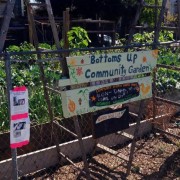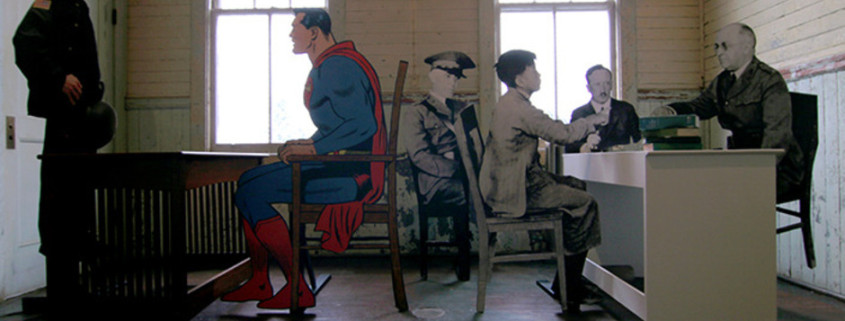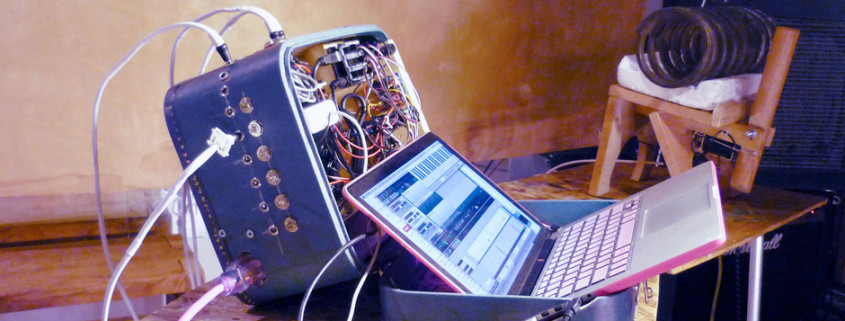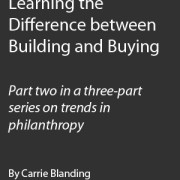The Awesome Foundation’s Awesome Microgrants
Erin Bregman, EAP 2014/15 Arts & Enterprise fellow first met San Francisco Awesome Foundation founder Jesse Taggert when Little Opera became an Awesome Foundation grantee in 2011.
Erin: I was just reading about the origins of the Awesome Foundation, and see that it started with Tim Hwang in Boston in 2008/2009. Were you involved in the early days of the Awesome Foundation? How did you first get involved?
Jesse: I spun up the San Francisco chapter in May of 2010. I think we were the third chapter to launch, or close to it. I had just started to “use Twitter” and saw some tweets about this interesting thing happening back in Boston, where I originally moved from. I loved the idea, and gently gave them a hard time for having an awesome board of all guys (I actually didn’t realize at the time that some of the names on their board were in fact those of women). Once they had a few friends in San Francisco interested, they contacted me and asked if I wanted to start the San Francisco chapter.
Erin: What does it take to found a chapter of the Awesome Foundation?
Jesse: You just need ten people who want to donate $100/month each. Chapters are decentralized, self-funding units. If you can pull together a group of folks that are willing to crowd source $1,000 a month and have a good (and kind and just) sense of awesome, you can do it to.
Erin: What was the strangest application you remember receiving?
Jesse: Ha! There are so many contenders. The guy that wanted $1000 to sit in a coffee shop and write while high, a fellow who wanted to buy a firearm with a grant. My personal, plausible favorite, that I still wish we funded, was a scholar in Bhutan (or perhaps Nepal) who wanted to create a dictionary of a dying local dialect. Another chapter, I later found out, did end up funding that. I can only imagine what some of the applications have been in the last two years since I moved on.
Erin: What would a typical conversation be like among trustees, as you tried to decide who to award the grant to in a given month?
Jesse: There was never a typical conversation, except for our occasional digressions into deep unanswerable questions like “just what is awesome?” Some months, there’d be an obvious grant application that just hit the mark. We valued quirky and artsy over purely needs-based asks. We also wanted to support people (and this often meant individuals or small groups over established non-profits) who may never have done an outward facing project before. The stakes were low — from a single trustee’s point of view it was $100 a shot. So if some projects didn’t pan out, it was okay. You still had eleven more to invest in.
Erin: Do you think the model would work as well with a different dollar amount? Or is there something about $1,000 that hits a sweet spot?
Jesse: I’d often joke that $1,000 does not get you much in San Francisco these days, but that amount can mean a lot to people. There’s also the power of the symbolic gesture of awarding faith to a person, no matter the financial amount.
Erin: There are more than 80 active chapters of the Awesome Foundation operating around the world right now. Why do you think the Awesome Foundation has been so successful?
Jesse: It’s low risk investment giving. Or “Mini-Macarthur grants”, to use Tim’s phrase. At the same time, you’re having a great time meeting people in your community. The simple online application and the low pressure protocol for awarding grants is just plain fun! And then meeting the folks you give the award to and attending their events is so so so rewarding.
Erin: Is there much communication or interaction between the different chapters?
Jesse: For sure. There’s a cross-chapter email group list that is active, and every year or so there’s an international “Awesome Summit”. So far the summit’s been held in Boston, New York, and Ottowa. The first year we had it, we spent the first few hours just walking around and talking to each other in awe. “You exist! Tell me all about what it’s like in Boston, Sydney, Philadelphia, Nova Scotia, Seattle, Houston…” We talk a lot about what makes awesome, how to keep trustees engaged, how to get good applicants.
Although I finally “retired” to do more of my own creative work, I think about the Awesome Foundation often and am still in touch with some of the current trustees. The San Francisco chapter doesn’t have the bandwidth to do a lot of promotion, but they are still out there awarding $1000 grants, month after month. Check them out!
Featured: Grow’n & Chef’n Proper in Lower W. Oakland!. May 2015 Grantee.








